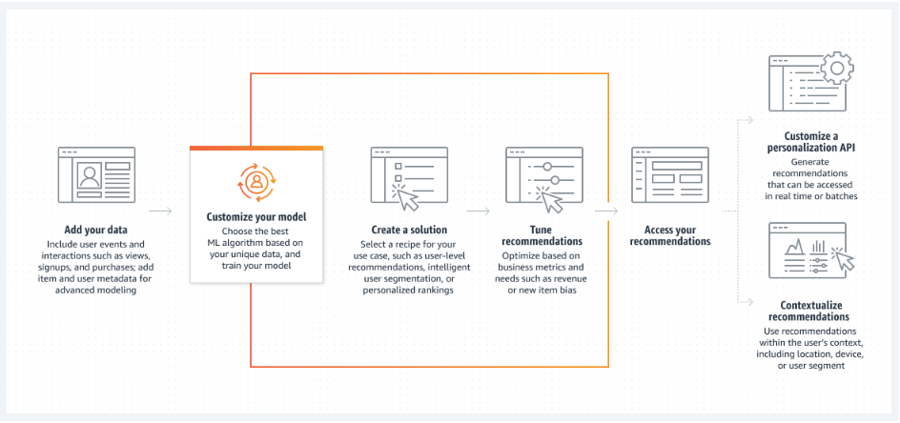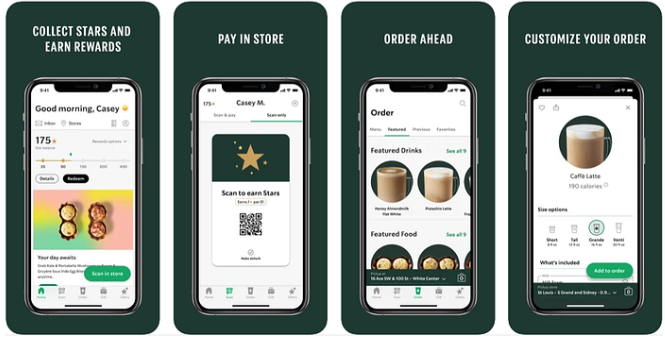
Fierce competition in the eCommerce marketplace means retailers always need something new to grab the attention of their target customers. However, AI is bridging the gap. This virtual assistant can create more relevant and engaging shopping experiences for customers.
It also proves helpful in providing valuable insights into customer behavior and preferences, boosting conversion rates, and serving relevant products, content, and promotions to shoppers.
Keep reading to discover how you can use AI to craft a personalized shopping experience for your customers.
Understanding AI-Powered Personalization
In eCommerce, AI is a game-changer due to its ability to process vast amounts of data and extract valuable insights. You can't deny its relevance in eCommerce for several reasons:
- Data Processing: Ecommerce generates enormous amounts of data, from consumer behavior to transaction histories. AI can efficiently analyze this data to derive meaningful patterns and trends.
- Personalization: Machine learning in online retail tailors the shopping experience for individual customers. As a result, AI can provide more personalized product recommendations and CTAs.
- Automation: AI can automate various tasks, from providing customer support to optimizing pricing and inventory. With this automation, you can streamline your business operations and improve efficiency.
- Predictive Analytics: AI can predict future trends and customer behaviors. Businesses can prepare for future demands, optimize marketing strategies, and make informed decisions.
- Real-Time Adaptation: AI operates in real-time to adjust content and recommendations as customers interact with an app or website. This ensures that the shopping experience remains relevant and engaging.
AI-powered product recommendations increase customer loyalty and brand engagement. You can even use AI to dynamically customize website content, banners, and promotions based on customer behavior.
Ecommerce platforms collect vast amounts of data, including customer profiles, browsing behavior, purchase history, etc. AI algorithms process this data to identify patterns and trends and create a deep understanding of customer preferences and behavior. Machine learning models make predictions and recommendations to improve accuracy.
AI operates in real-time while using data from a customer’s current session to personalize the shopping experience. And don’t worry about data security — AI systems can be designed to handle data securely and ensure compliance with privacy regulations.
1. AI-Driven Product Recommendations
AI-driven product recommendations offer a range of benefits to both businesses and customers, including:
- Increased Sales: Personalized product recommendations entice customers to make additional purchases, which leads to higher conversion rates and revenue. Customers like to buy products that align with their preferences.
- Enhanced Customer Experience: Customers always appreciate relevance and convenience. You can create a more enjoyable shopping journey with tailored recommendations.
- Customer Retention: When consumers consistently find what they want, they are more likely to return for future purchases. This plays a vital role in boosting customer loyalty and long-term engagement.
- Reduced Cart Abandonment: With relevant product suggestions, you can address customer indecision, leading to reduced cart abandonment rates. AI-driven recommendations guide customers through the buying process.
- Cross-Selling and Upselling: AI identifies opportunities to present related products or higher-value items. As a result, it can increase average transaction value and revenue.
Algorithms Behind Personalized Product Recommendations
The effectiveness of AI for online stores and eCommerce lies in its algorithms that analyze customer data and behavior. Here are the fundamental algorithms used:
- Collaborative Filtering: This algorithm analyzes user behavior and finds patterns of similarity between customers. It recommends products that users with similar preferences have shown interest in.
- Content-Based Filtering: These algorithms consider the attributes of products and match them to a customer's historical preferences. If a customer previously bought a green dress, the algorithm might recommend other green clothing items.
- Matrix Factorization: These techniques break down user-item interactions into latent factors and make recommendations based on underlying characteristics.
- Deep Learning: Neural networks, including deep learning models, can process complex data and offer highly accurate recommendations. They excel at handling unstructured data such as images and text.
- Hybrid Methods: Many systems use a combination of these algorithms to improve recommendation accuracy. Hybrid methods leverage the strengths of different algorithms to provide more well-rounded suggestions.
2. Content Personalization with AI
For eCommerce business growth, you should tailor digital content to individual shoppers based on their behavior and preferences. Here are some strategies for content personalization with AI.
Customizing Content for Individual Shoppers
Personalizing content means creating a unique and relevant experience for each shopper. Netflix uses AI to customize the content displayed on its homepage for each user.

Source: Netflix
To display content, it analyzes your viewing history and preferences to recommend movies and TV shows you’d likely enjoy. This leads to longer viewing sessions and increased user satisfaction.
Leveraging Machine Learning for Content Recommendations
Machine learning algorithms are the backbone of content personalization. They analyze user data to make real-time recommendations. For example, Amazon employs machine learning to suggest products based on browsing and purchasing history.

Source: Amazon
For example, Amazon will recommend camera accessories if you’ve been browsing DSLR cameras. This increases the chances of cross-selling and upselling.
Impact of Personalized Content on Conversions
The impact of personalized content on conversions is significant.
For example, Spotify uses AI to curate personalized playlists for users based on their music preferences and listening habits.

Source: Spotify
This can increase user engagement, longer time spent on the platform, and a higher likelihood of upgrading to a premium subscription.
Practical Strategies for Implementing AI-Driven Content Personalization
To implement AI-driven product recommendations on your eCommerce platform, follow these steps:
- Collect Data: Gather and store customer data. You need purchase history, browsing behavior, and demographic information.
- Pick an Algorithm: Select an algorithm or combination of algorithms that align with your business goals and data. Consider the complexity of your product catalog and the nature of your customer data.
- Integration: Integrate the chosen algorithm(s) into your eCommerce platform. This may require technical expertise or the use of third-party recommendation engines.
- Testing and Optimization: Continuously test and optimize your recommendation system. Monitor performance metrics, collect user feedback, and make adjustments to improve the accuracy of suggestions.
- Real-Time Recommendations: Provide recommendations in real-time as users interact with your platform or website.
- Privacy and Security: Ensure that you handle customer data securely and in compliance with privacy regulations. Customer trust is essential.
- User Interface: Implement a user-friendly interface to present recommendations to customers. Make it intuitive and visually appealing.
- A/B Testing: Conduct A/B tests to assess the impact of recommendations on user engagement and sales. Use the results to fine-tune your recommendation engine.
- Multichannel Personalization: Extend personalization beyond your website to email marketing, mobile apps, and other touchpoints with customers.
Using AI for online store optimization can create a competitive edge and keep customers engaged and satisfied.
3. Tailored Customer Journeys
To create tailored customer journeys, you should customize the experiences your customers have at each point. Pay attention to every step, from the initial interaction to the final purchase.
Mapping Personalized Customer Journeys
First, segment your customers based on their demographics, preferences, and behaviors. Identify the critical customer personas you want to target with personalized journeys.
Next, map out the various touch points where customers interact with your brand, such as website visits, social media, email engagement, etc.
Then, customize content and messaging for each customer segment and touch point. Use AI-driven recommendations and dynamic content to make the customer journey more relevant.
Finally, ensure consistency in messaging and branding across all customer touchpoints to provide a seamless experience.
Predictive Analytics and AI-Powered Insights
You can also leverage predictive analytics and AI to gain insights into customer behavior and preferences.
Collect and analyze data on customer interactions and transactions through various channels, including your website, emails, social media accounts, and the contact center. Identify patterns and trends to anticipate customer needs.
You should also predict future customer behavior based on historical data, such as the probability of a purchase. Use these predictions to offer tailored recommendations and content.
AI can even determine the optimal timing for customer interactions, such as sending emails or notifications based on when a customer is most likely to engage.
Crafting Dynamic Shopping Experiences
Create dynamic shopping experiences that adapt to individual preferences and behaviors. Follow these steps:
- Real-Time Personalization: Implement real-time personalization to adjust content and product recommendations as customers browse your website or app.
- Shopping Cart Optimization: Use AI to remind customers of abandoned shopping carts. Offer incentives or product recommendations to encourage them to complete their purchase.
- Location-Based Personalization: Use geolocation data to provide location-specific offers and recommendations. It will enhance the in-store or online shopping experience.
KPIs for AI-Enhanced Customer Journeys
To measure the success of AI-enhanced customer journeys, track key performance indicators (KPIs) such as:
- Conversion Rate: Calculate the number of visitors who take a desired action, such as signing up for a newsletter or making a purchase decision.
- Average Order Value (AOV): Monitor the average amount customers spend during purchases, which can increase with personalized recommendations and cross-selling.
- Customer Retention: Track how well your personalized journeys retain customers and encourage repeat purchases.
- Click-Through Rate (CTR): Assess the effectiveness of personalized content by measuring the rate customers click on recommended products or links.
- Customer Satisfaction: Gather customer feedback to gauge satisfaction with the personalized experiences and adapt based on their responses.
- Customer Lifetime Value (CLV): Calculate the value a customer brings to your business over their entire relationship with your brand.
- Average Revenue Per User (ARPU): Evaluate the average revenue generated from individual customers, which can be optimized through tailored customer journeys and personalized offerings.
- Cart Abandonment Rate: Monitor the rate customers abandon their shopping carts and implement strategies to reduce abandonment through personalization.
Success Story: Starbucks’s Personalized Offers and Recommendations
Starbucks’s mobile app tailors customer journeys by providing personalized offers, exclusive discounts, and order suggestions based on previous purchase history. The app uses predictive analysis to anticipate customer preferences and order patterns.

Source: Apple App Store
It ensures sending timely and relevant offers. Customers receive real-time notifications about nearby store promotions and personalized drink recommendations. It enhances the in-store and mobile app experience.
4. AI in Customer Support and Engagement
AI has transformed the way businesses interact with customers and provide support. Here is how AI is making a significant impact on customer support and engagement.
AI Chatbots Revolutionizing Customer Interaction
AI-powered chatbots can be available 24/7 to answer customer inquiries and provide support. They use natural language processing to understand and respond to customer queries.
Chatbots can handle routine requests, such as answering FAQs or tracking orders. It gives human agents more time for complex issues.
For example, IBM and Microsoft use AI chatbots to provide efficient and immediate customer support.
Personalized Email Marketing Campaigns
AI analyzes customer data to create highly personalized email marketing campaigns. It tailors content, product recommendations, and timing based on customer behavior and preferences. Personalization, as a result, increases email open rates and conversions.
Amazon sends personalized product recommendations via email, encouraging customers to revisit the platform and purchase.
Real-Time Customer Support With AI
AI offers real-time support through live chat or messaging apps, providing instant answers and assistance. It can handle multiple inquiries simultaneously, reducing wait times and enabling better communication with customers.
AI can even route complex issues to human agents when necessary, ensuring a seamless customer experience.
For example, Apple and Verizon use AI-driven chat for real-time customer support.
Enhancing Customer Loyalty Through AI-Driven Engagement
AI analyzes customer data to understand preferences, behaviors, and buying patterns. It helps businesses offer personalized rewards, discounts, and incentives to build customer loyalty.
AI can also send reminders, product recommendations, and offers to engage customers.
As discussed previously, Starbucks uses its mobile app to offer rewards, personalized discounts, and a seamless mobile order and pay experience, enhancing customer loyalty.
5. Overcoming Challenges and Privacy Concerns
It is easy to overcome challenges and address privacy concerns by implementing AI, especially in the context of personalization. Here's how organizations can navigate these issues.
Balancing Personalization with Data Privacy
In AI-driven systems, you should balance personalization with data privacy. This means respecting user privacy while providing tailored experiences.
Ensure users provide explicit consent for data collection and personalization. Clearly communicate how you will use their data.
Use anonymization techniques to protect user identities while delivering personalized content.
Addressing Common Challenges in AI Implementation
Some of the most common challenges faced are the quality of data and integrations. You can address these easily:
- Data Quality: Create a fact-checking system to ensure that AI-provided data/insights are accurate, relevant, and up-to-date. Invest in data cleansing and validation.
- Interoperability: Integrate AI systems seamlessly with existing and emerging technologies and processes to avoid disruptions.
Staying Compliant with Data Protection Regulations
AI must adhere to data protection regulations, such as GDPR and CCPA. This can be done by practicing:
- Data Minimization: Collect only the data necessary for personalization and delete it when it's no longer needed.
- Data Portability: Allow users to access and move their data as regulations require.
Building Trust with Transparent AI Practices
To build trust, your AI practices should be transparent and understandable. When communicating with your customers about your use of AI, your messages should be:
- Easy to Understand: Ensure AI decision-making is explainable to users, with clear reasons for recommendations.
- Transparent: Disclose the use of AI for personalization, detailing data usage and sharing practices.
Future Trends in AI-Driven eCommerce Personalization
AI-driven eCommerce personalization is evolving rapidly, and several future trends can shape the landscape. Here are two key trends and their implications to watch out for.
Voice Commerce and Virtual Assistants (VAs)
With the increasing popularity of virtual assistants like Amazon's Alexa and Google Assistant, voice commerce is becoming a significant trend. You can expect to see the popularization of:
- Voice-Activated Shopping: AI will play a pivotal role in enabling voice-activated shopping, where users can purchase and receive recommendations through voice commands.
- Conversational AI: Chatbots and virtual assistants will become more conversational and human-like. They will be capable of understanding context and providing personalized product recommendations. This makes the shopping experience more natural and convenient.
- Personalized Voice Recommendations: AI will leverage user profiles and preferences to offer personalized voice recommendations. It ensures that the products suggested align with individual tastes and needs.
- Voice Search Optimization: Ecommerce businesses will focus on optimizing their content for voice search because more consumers use VAs to find products and services. AI will assist in understanding voice queries and delivering relevant results.
Augmented Reality (AR) and AI-Powered Shopping
New technologies will continue to transform the eCommerce landscape. Alongside AI, brands are increasingly implementing augmented reality into their shopping experiences. AI and AR will soon collaborate to offer customers immersive experiences like:
- AR-Enhanced Product Visualization: Shoppers will use AR apps to visualize products in their real environment before purchasing, from trying on clothes to seeing how furniture fits in their homes.
- Personalized AR Recommendations: AI will analyze customer preferences and suggest AR experiences that match their interests. For example, if a customer loves interior design, they might receive AR-enhanced recommendations for furniture shopping.
- AI-Driven Virtual Try-Ons: AI will power virtual try-on experiences, where customers can see how clothing, accessories, or makeup look on themselves using AR. These try-on simulations will be highly personalized.
- Real-Time Shopping Assistance: AI will provide real-time assistance during AR-enhanced shopping experiences. It can guide customers through product features and options. Moreover, it will offer personalized suggestions based on what the user is viewing through AR.
Unleash AI's Potential in eCommerce Personalization
AI-driven eCommerce personalization has rapidly evolved over the last decade, revolutionizing how businesses interact with customers while increasing user satisfaction. Companies should offer unique and tailored shopping experiences to capture new users and ensure brand loyalty.
Embrace the future of online retail and stay ahead of the competition with AI-driven personalization.





Leave a reply or comment below